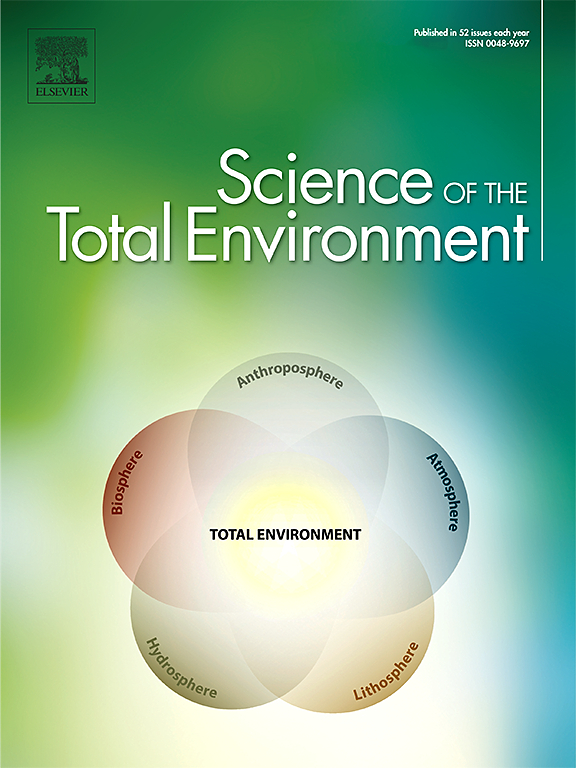Metal and metalloid content in real urban synthetic surfaces made of recycled tire crumb rubber including playgrounds and football fields
IF 8.2
1区 环境科学与生态学
Q1 ENVIRONMENTAL SCIENCES
引用次数: 0
Abstract
The disposal of end-of-life tires (ELTs) is an important issue in the context of solid waste management. In the last decades, the main recycling route consists of the ELTs transformation in crumb rubber, which is widely used worldwide in playgrounds and sports fields as infill material. Crumb rubber represents the largest source of intentional microplastics in the environment. This microplastic material contains high metal concentration including toxic and heavy metals. Few studies deal with the metal(loid) characterization of real crumb rubber samples taken in situ from sports and leisure facilities. Research is especially scarce for playgrounds, despite interest due to the population using these facilities (children).
This study aims at addressing the metal(loid) distribution in a large number of real samples from different urban places, most from Galicia (NW Spain) but also from other countries. 32 elements including metals (Ag, Al, Ba, Be, Bi, Ca, Cd, Co, Cr, Cu, Fe, In, K, Li, Mg, Mn, Mo, Na, Nb, Ni, Pb, Se, Sr, Ti, Tl, U, V, Zn) and 4 metalloids (As, B, Sb, Si) were determined. For comparison purposes, some alternative materials (cork, sand, and thermoplastic elastomers) were collected. The results showed high Zn levels (1–2 %) in crumb rubber, exceeding the safety limits set in the European directives for related matrices. Heavy and toxic elements (Pb, Cr, As, Cd, Sb) were found in all samples, reaching concentrations up to 100 mg kg−1. Co presented concentrations of 200 mg kg−1, well above the safety limits (10 mg kg−1 for toys). ANOVA showed statistical differences between playgrounds and football fields for some elements. The alternative materials proved safer regarding metal(loid) content. This study is the largest one about metal(loid) characterization in crumb rubber surfaces attending the number of samples, origin, and elements analyzed.

求助全文
约1分钟内获得全文
求助全文
来源期刊

Science of the Total Environment
环境科学-环境科学
CiteScore
17.60
自引率
10.20%
发文量
8726
审稿时长
2.4 months
期刊介绍:
The Science of the Total Environment is an international journal dedicated to scientific research on the environment and its interaction with humanity. It covers a wide range of disciplines and seeks to publish innovative, hypothesis-driven, and impactful research that explores the entire environment, including the atmosphere, lithosphere, hydrosphere, biosphere, and anthroposphere.
The journal's updated Aims & Scope emphasizes the importance of interdisciplinary environmental research with broad impact. Priority is given to studies that advance fundamental understanding and explore the interconnectedness of multiple environmental spheres. Field studies are preferred, while laboratory experiments must demonstrate significant methodological advancements or mechanistic insights with direct relevance to the environment.
 求助内容:
求助内容: 应助结果提醒方式:
应助结果提醒方式:


